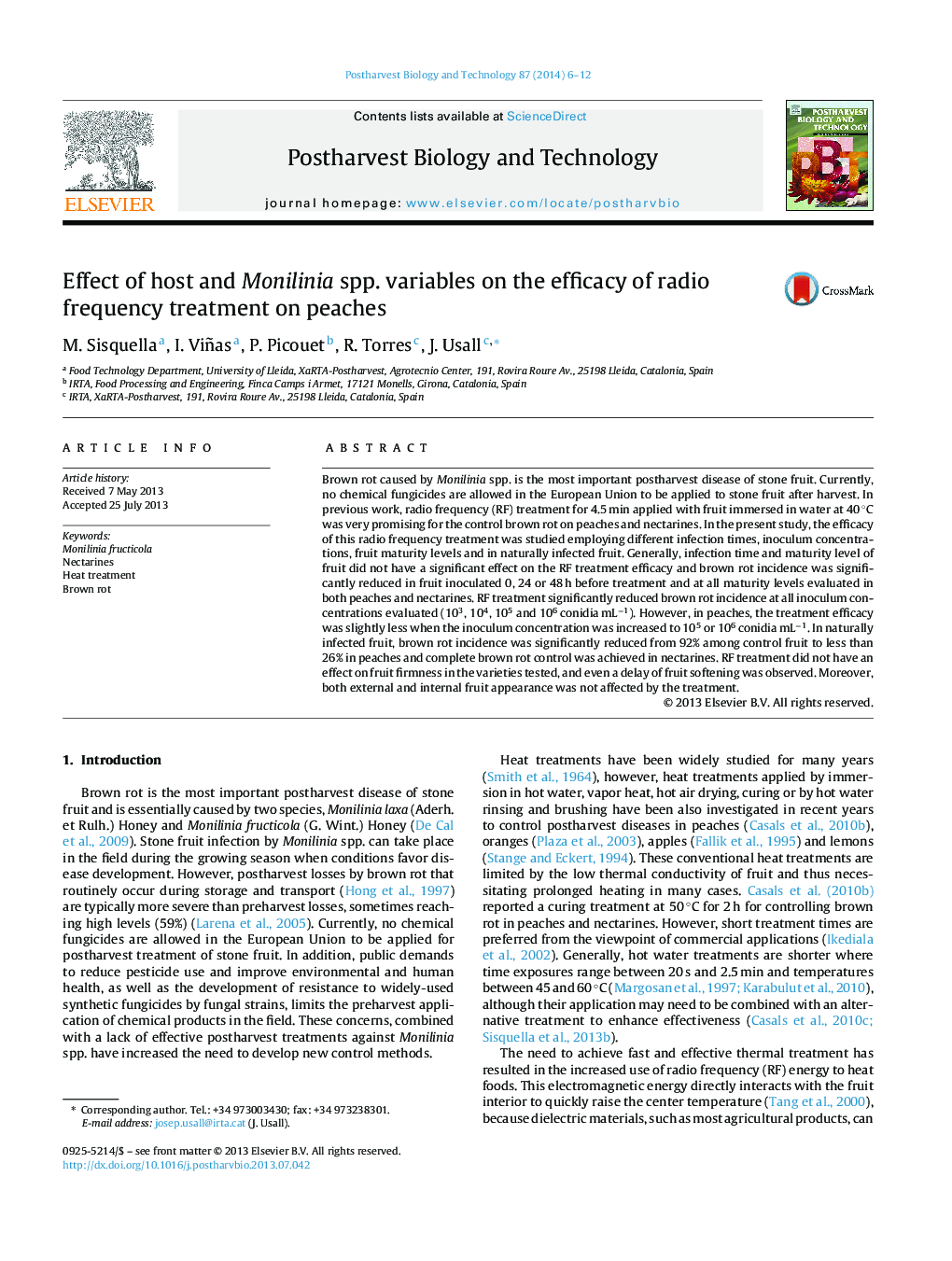| Article ID | Journal | Published Year | Pages | File Type |
|---|---|---|---|---|
| 4518323 | Postharvest Biology and Technology | 2014 | 7 Pages |
•Radio frequency (RF) with fruit immersed in water at 40 °C for 4.5 min was studied.•Fruit maturity level did not have a significant effect on RF treatment efficacy.•Brown rot incidence was significantly reduced at all the infection times evaluated.•The treatment controlled brown rot at all inoculum concentrations evaluated.•In naturally infected fruit, brown rot incidence was reduced to less than 26%.
Brown rot caused by Monilinia spp. is the most important postharvest disease of stone fruit. Currently, no chemical fungicides are allowed in the European Union to be applied to stone fruit after harvest. In previous work, radio frequency (RF) treatment for 4.5 min applied with fruit immersed in water at 40 °C was very promising for the control brown rot on peaches and nectarines. In the present study, the efficacy of this radio frequency treatment was studied employing different infection times, inoculum concentrations, fruit maturity levels and in naturally infected fruit. Generally, infection time and maturity level of fruit did not have a significant effect on the RF treatment efficacy and brown rot incidence was significantly reduced in fruit inoculated 0, 24 or 48 h before treatment and at all maturity levels evaluated in both peaches and nectarines. RF treatment significantly reduced brown rot incidence at all inoculum concentrations evaluated (103, 104, 105 and 106 conidia mL−1). However, in peaches, the treatment efficacy was slightly less when the inoculum concentration was increased to 105 or 106 conidia mL−1. In naturally infected fruit, brown rot incidence was significantly reduced from 92% among control fruit to less than 26% in peaches and complete brown rot control was achieved in nectarines. RF treatment did not have an effect on fruit firmness in the varieties tested, and even a delay of fruit softening was observed. Moreover, both external and internal fruit appearance was not affected by the treatment.
